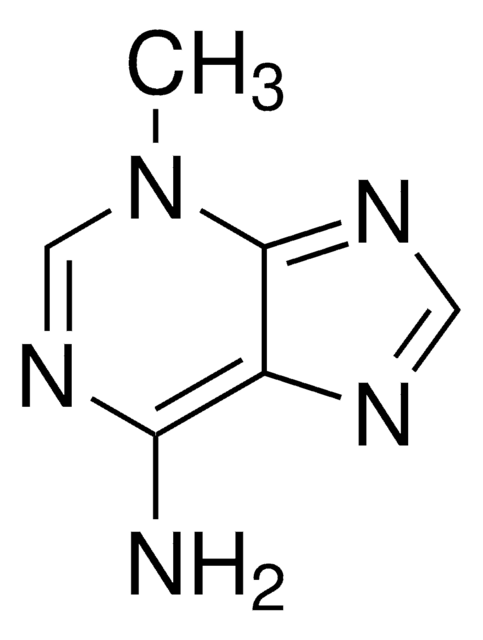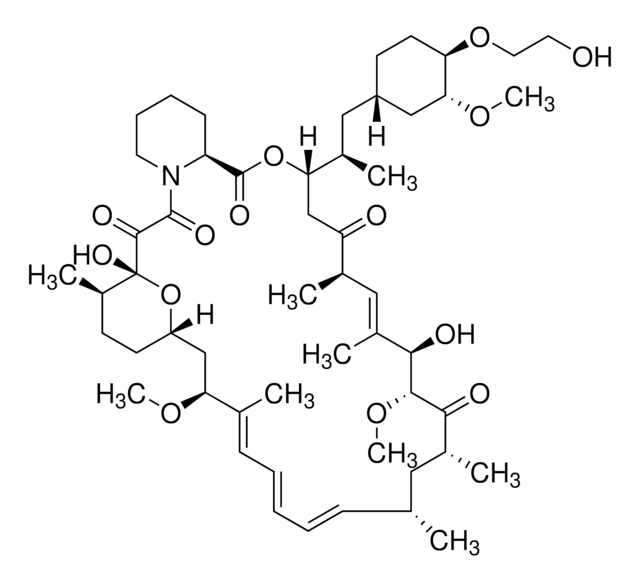553210
Rapamycin
≥95% (HPLC), powder
Sinónimos:
Rapamycin, mTOR Inhibitor I
About This Item
Productos recomendados
Quality Level
assay
≥95% (HPLC)
form
powder
manufacturer/tradename
Calbiochem®
storage condition
OK to freeze
color
clear
solubility
DMSO: 200 mg/mL
ethanol: 50 mg/mL
shipped in
ambient
storage temp.
−20°C
General description
Biochem/physiol Actions
Mammalian target of rapamycin (mTOR)
Warning
Reconstitution
Other Notes
Powell, D.J., et al. 2003. Mol. cell Biol.23, 7794.
Braun, W., et al. 1995. FASEB J.9, 63.
Nielsen, F.C., et al. 1995. Nature 377, 358.
Aagaard-Tillery, K.M. and Jelinek, D.F. 1994. Cell. Immunol. 156, 493.
Gottschalk, A.R., et al. 1994. Proc. Natl. Acad. Sci. USA91, 7350.
Morice, W.G., et al. 1993. J. Biol. Chem.268, 3734.
Terada, N., et al. 1993. J. Biol. Chem.268, 12062.
Kuo, J., et al. 1992. Nature 358, 70.
Price, D.J., et al. 1992. Science257, 973.
Heitman, J., et al. 1991. Science253, 905.
Kay, J.E., et al. 1991. Immunology72, 544.
Schreiber, S.L. 1991. Science251, 283.
Bierer, B.E., et al. 1990. Proc. Natl. Acad. Sci. USA87, 9231.
Dumont, F.J., et al. 1990. J. Immunol.144, 251.
Legal Information
signalword
Warning
hcodes
Hazard Classifications
Carc. 2 - Repr. 2
Storage Class
11 - Combustible Solids
wgk_germany
WGK 2
Certificados de análisis (COA)
Busque Certificados de análisis (COA) introduciendo el número de lote del producto. Los números de lote se encuentran en la etiqueta del producto después de las palabras «Lot» o «Batch»
¿Ya tiene este producto?
Encuentre la documentación para los productos que ha comprado recientemente en la Biblioteca de documentos.
Artículos
AldeRed™ 588-A is a red fluorescent live cell probe that detects ALDH activity used to identify cancer stem cells and progenitor cells in culture. Cancer stem cells (CSCs) are subpopulations of cancer cells that can self-renew, generate diverse cells in the tumor mass, and sustain tumorigenesis. Some researchers believe that cancer arises from cancer stem cells that originate as a result of mutational hits on normal stem cells.
Nuestro equipo de científicos tiene experiencia en todas las áreas de investigación: Ciencias de la vida, Ciencia de los materiales, Síntesis química, Cromatografía, Analítica y muchas otras.
Póngase en contacto con el Servicio técnico







